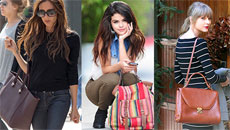The fast-paced world of fashion is bowing out gracefully to the “slow clothing” movement, transforming how clothes are made, worn, and perceived. Sustainable fashion, once an “out of the box” concept, is now at the forefront, pushing boundaries and redefining style globally. It isn’t just a buzzword anymore but an amalgamation of innovation, tradition, and a future where fashion is both stylish, conscious, and responsible.
Vancouver-based sustainable fashion advocate and co-founder of Fibr.Bio, Jaiya Varshney emphasizes the growing consumer awareness driving this shift, stating, “Sustainable fashion is gradually taking center stage as consumers become increasingly aware of the impact their purchasing decisions have on the planet and people. As people learn more about the devastating environmental consequences of conventional fashion, their demand for more responsible alternatives grows.”
The Fabric of Tomorrow
At the helm of this revolution is the development of textiles that minimize environmental impact while offering exciting new possibilities for design, sometimes making it hard to imagine that fashion can evolve so dramatically. Varshney highlights some trends that will dominate the industry in the coming years: “Innovative and sustainable materials like those we're developing at Fibr.Bio are reshaping the industry.”
Among these innovative materials, several fabrics stand out for their eco-friendly properties:
Regenerative Fabrics: These fabrics, such as regenerative cotton and wool, restore the environment through practices that improve soil health and biodiversity. These materials are not just sustainable; they actively contribute to the ecosystem, making fashion a force for good.
Orange Fiber and Piñatex: In the quest for alternatives to traditional textiles, plant-based and residual materials like Orange Fiber (from citrus waste) and Piñatex (from pineapple leaves) are gaining momentum. These groundbreaking fabrics bring unique textures and stories to each garment, ensuring longer durability and softness.
Hemp Fabric: One of the cleanest of the lot, hemp is gaining popularity due to its low water usage and rapid growth. It is flexible, strong, and biodegradable, making it a preferred choice for t-shirts and everyday clothing because it is wear and tear proof.
Tencel (Lyocell): Produced from sustainably sourced wood pulp, Tencel is popular for its sweat-wicking and dry-tech properties. Its closed-loop production process recycles water and solvents, making it a highly sustainable option.
Lab-grown Leather: Traditional leather production has often been criticized for its environmental impact, but lab-grown leather offers a luxurious alternative without the environmental penalty. Manufactured from animal cells or plant-based materials, this cruelty-free fabric rebrands itself as a sustainable luxury.

Varshney adds, “Companies like Pangaia are pioneering the use of eco-friendly fabrics that push the boundaries of what's possible. The rental fashion market, led by platforms like Rent the Runway, is gaining popularity as it offers consumers high-quality fashion without the environmental impact of fast fashion. Upcycling programs, such as those by Frankie Collective, offer unique, reimagined pieces while reducing waste. Meanwhile, the second-hand and vintage markets are booming, with platforms like The RealReal and Vestiaire Collective providing curated collections of pre-loved fashion.”

Tale Lies in The Technique
Sustainable fashion goes beyond what we wear and includes several other social, environmental, and economic conditions, practices, and processes. New-age techniques advocate low to no waste and are targeted toward conserving resources while adding a narrative of craftsmanship and care to each piece.
In zero-waste design, the beauty lies in using the fabric to its last weave, preventing wastage. This approach minimizes environmental impact and fosters creativity, exclusivity, and artistry. Upcycling is the art of infusing life into old, discarded material and transforming it into a renewed piece. Brands are rolling out trade-in offers for old pairs of jeans, remodeling them into newer collections. Another future-forward technique working its way up the rung is 3D knitting, which is more efficient than traditional cut-and-sew methods. It entails computer-controlled machines knitting garments in three dimensions, reducing waste and allowing for precise, customized fits. 3D-knitted garments are made in a single piece, facilitating localized production, cutting down production and transportation inefficiencies, and ensuring minimal yarn wastage.

Beginner’s Guide to Embracing Ethical Fashion
While sustainable fashion may sometimes seem like a high-end concept, it is an easy and operative reality for anyone willing to make conscious choices.
The green fashion mogul offers consumers practical advice:
Shop With Intention: Focus on buying versatile, timeless pieces that you love and will wear for years.
Buy Less, Choose Quality: Prioritize fewer, high-quality items to reduce waste and reliance on fast fashion.
Opt For Second-Hand: Embrace second-hand and vintage clothing to reduce environmental impact and find unique pieces.
Choose Natural Materials: Select fabrics like organic cotton, hemp, or Tencel over petroleum-based options.
Care For Your Clothes: Extend the life of your garments by washing them properly, repairing them, and maintaining them well.
The Future That We Know Of
The sustainable movement is not just a fleeting trend but a barometer of the new face of fashion worldwide. From the charming alleys of Paris to Toronto's streets, the demand for ethical, eco-friendly fashion is driving brands to rethink their practices. By fusing ancient craft with modern technologies and past wisdom with scientific foresight, the language of fashion will have a greater meaning—of self-love, love for the environment, and love for one another, all rooted in impact and purpose.






